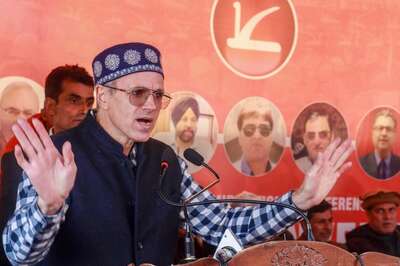
views
BHUBANESWAR: If travelling in Keonjhar is a pain, you know who to blame. A multi-fold rise in mineral extraction is not only killing the roads in the mining hinterland of the State but also choking the traffic movement. The Orissa Government which is chalking out the mineral extraction limit for two of its most mined regions - Joda and Koira - is all set to come up with a carrying capacity of the areas. The Orissa State Pollution Control Board is currently working on the carrying capacity study. According to the existing data, present traffic on the roads of Keonjhar district is more than the carrying capacity of the roads leading to excessive congestion and serious inconvenience to users. The Rangalbeda-Bhadrasahi stretch of NH 215 has a carrying capacity of 15,000 passenger car units (PCUs) but its actual PCU is 16,759 and to add to the problems, over 85 per cent of the vehicles plying on it are double-axle and multi-axle trucks. Similarly, the Joda-Bamberi-Palasapanga stretch, a part of the Expressway, has a carrying capacity of 2,000 PCUs but it has to bear the load of 12,361 PCUs. The Palashpanga-Keonjhar-Ghatagaon stretch of NH 215, a frequently-used road, is used by 21,222 PCUs as against the designed capacity of 15,000 PCUs. Although the NH 215 is a double lane road with a capacity for 15,000 PCUs a day, there are 11 existing narrow single-lane bridges and culverts which have constricted the roads leaving travellers crammed for space. In view of the congestions, the road must not be used by 8,000 PCUs for a safe level of security but the actual load is more than 15,000 PCUs. A glance at the astronomical rise in a number of heavy vehicles tells the real story. Before 2006, six-wheeler trucks number in Keonjhar stood at 6,000 but as on March 2009, it had witnessed a massive leap to 13,000. The number of 10-wheelers too has jumped from 1,000 in 2006-07 to 7,000 in 2009. The result: In some stretches, the traffic is 12 per cent higher than prescribed whereas in others, it is 41 per cent more. The growth in vehicle population apart, the overloading by the trucks exerts more pressure on the roads too. What has led to such a disastrous scenario is the mindless rise in mining. Between 2003-04 and 2010, the approved mining has jumped multi-fold necessitating the transportation and use of vehicles. For the top 50 mines, the approved mining, as per IBM, has risen by three times - from 34 MT to 143 MT - without any commensurate rise in infrastructure. In Joda circle, the annual production is 50 MT and another 20 MT is produced in Koira. In view of the problems, the Government is seriously contemplating to restrict ore transport by road to Paradip. Since ore transport from Jharkhand also is carried out on NH 215, the Government is planning to write to the neighbouring Government to switch to rail route.


















Comments
0 comment